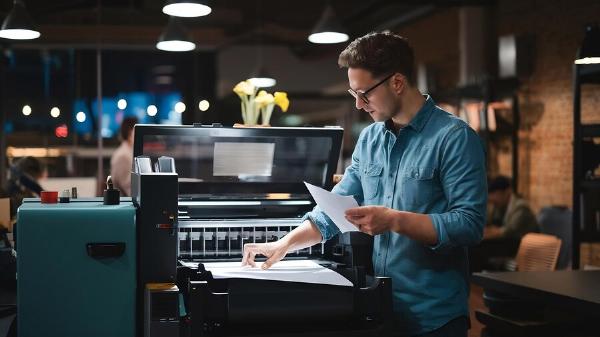How to Prepare Your Artwork for Poster Printing?

Strong 8k brings an ultra-HD IPTV experience to your living room and your pocket.
Creating a poster is an exciting process that allows you to showcase your creativity and communicate a message effectively. However, ensuring your artwork is prepared correctly for poster printing is crucial to achieve a professional and polished result. This guide will walk you through the essential steps and considerations for preparing your artwork for poster printing.
Poster Dimensions
The first step in preparing your artwork is understanding the dimensions of your poster. Standard poster sizes include A4, A3, A2, A1, and A0, but custom sizes are also available. Knowing the exact dimensions helps in designing the artwork to fit perfectly without any distortion or cropping issues. Ensure your design software is set to the correct dimensions right from the start.
Right Resolution
High resolution is critical for poster printing. A resolution of 300 dots per inch (DPI) is typically recommended for high-quality prints. This ensures that your poster will be sharp and clear when printed. Lower resolutions may result in pixelated images and poor print quality. Always check and set your image resolution before starting your design.
Color Mode
Posters are usually printed using the CMYK color mode, which stands for Cyan, Magenta, Yellow, and Black. This is different from the RGB color mode used for digital screens. Converting your artwork to CMYK before poster printing ensures that the colors you see on your screen will match the printed result as closely as possible. Most design software allows you to easily switch between color modes.
High-Quality Images
Using high-quality images is essential for a professional-looking poster. Avoid using images downloaded from the internet as they are often low resolution and may not print well. Instead, use high-resolution images from reputable stock photo sites or hire a professional photographer. Ensure all images are at least 300 DPI and properly scaled to avoid pixelation.
Vector Graphics
Vector graphics are an excellent choice for poster design because they can be scaled to any size without losing quality. Logos, icons, and text are best created as vectors. Programs like Adobe Illustrator are perfect for creating and editing vector graphics. Ensure all vector elements are correctly exported and placed into your poster design.
Bleed and Margins
Bleed is an area of your design that extends beyond the actual size of your poster. This ensures that there are no white edges after trimming. Typically, a bleed of 3mm is standard. Additionally, set up safe margins to keep important elements like text and logos away from the edges, preventing them from being cut off during the trimming process.
The Right Fonts
Font selection plays a significant role in the readability and aesthetic appeal of your poster. Choose fonts that are clear and legible from a distance. Avoid using too many different fonts; stick to two or three at most. Ensure that the text size is appropriate for the viewing distance of the poster. All text should be converted to outlines or embedded to avoid font substitution issues during poster printing.
Colors and Contrast
A good poster design has a balanced use of colors and contrast. Use a color palette that complements your message and brand identity. Ensure there is sufficient contrast between the background and text for readability. Avoid using too many colors, which can make the poster look cluttered. Test print sections of your poster to see how colors appear in print, as they may look different from on-screen.
Designing for Impact
Your poster needs to capture attention quickly. Focus on creating a strong visual hierarchy with a clear focal point. Use large, bold headlines to draw attention, and support your message with images, graphics, and holographic stickers. Keep the design clean and uncluttered, with plenty of white space to help the viewer's eye focus on the key elements.
Proofreading and Reviewing
Before sending your artwork to print, thoroughly proofread all text for spelling and grammatical errors. Check the alignment, colors, and overall design for any inconsistencies. It’s helpful to get a second pair of eyes to review your work, as they might catch mistakes you missed. Make any necessary adjustments to ensure your poster is perfect.
A Professional Printer
Choosing a reputable printer is crucial for achieving the best results. Research different printing services and read reviews. Communicate clearly with your printer about your expectations and any specific requirements. Ask for a proof print to check the colors and quality before the full print run.
Proper Storage and Handling
After poster printing, proper storage and handling of your posters are essential to maintain their quality. Store posters flat or rolled, depending on their size, and keep them in a cool, dry place to prevent damage. Use protective coverings to avoid scratches and other physical damage during transportation.
Conclusion
Preparing your artwork for poster printing involves careful planning and attention to detail. By understanding the technical aspects, such as resolution, color modes, and file formats, and focusing on design elements like fonts, images, and overall layout, you can create a visually appealing and professional poster. Collaborating with a reputable printer and ensuring proper storage will further enhance the quality and longevity of your poster. With these steps, your artwork will be ready to make a lasting impression.
Note: IndiBlogHub features both user-submitted and editorial content. We do not verify third-party contributions. Read our Disclaimer and Privacy Policyfor details.







